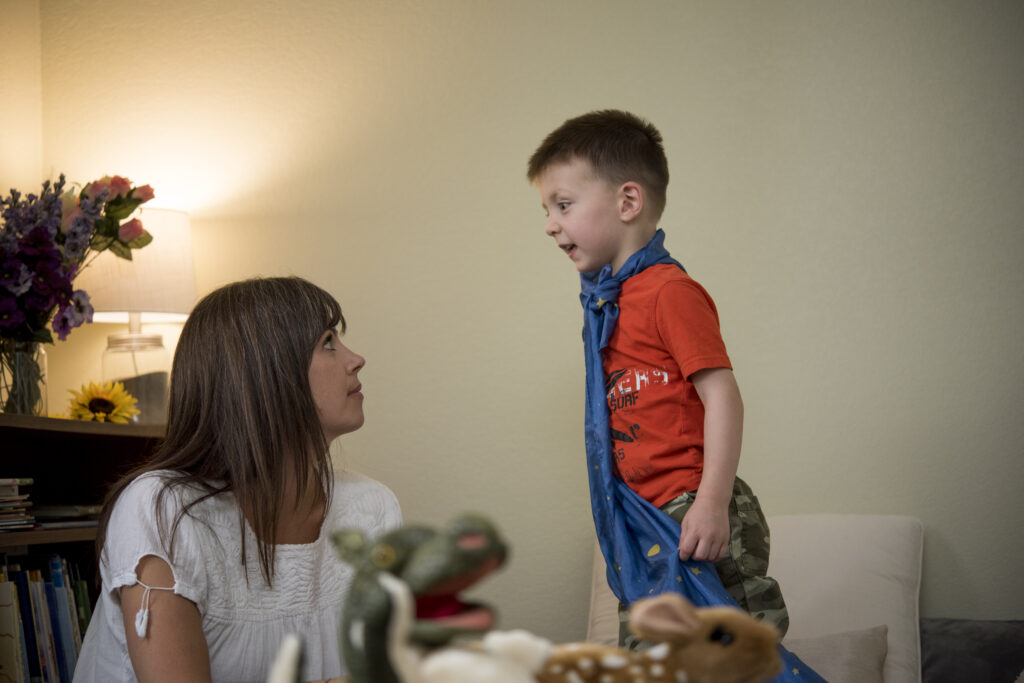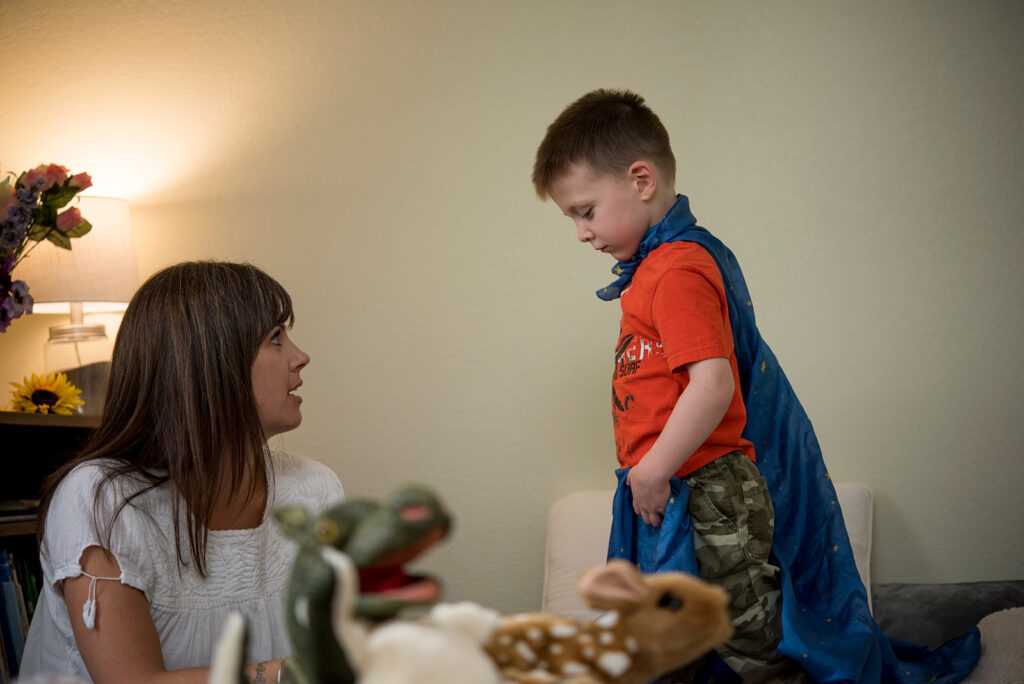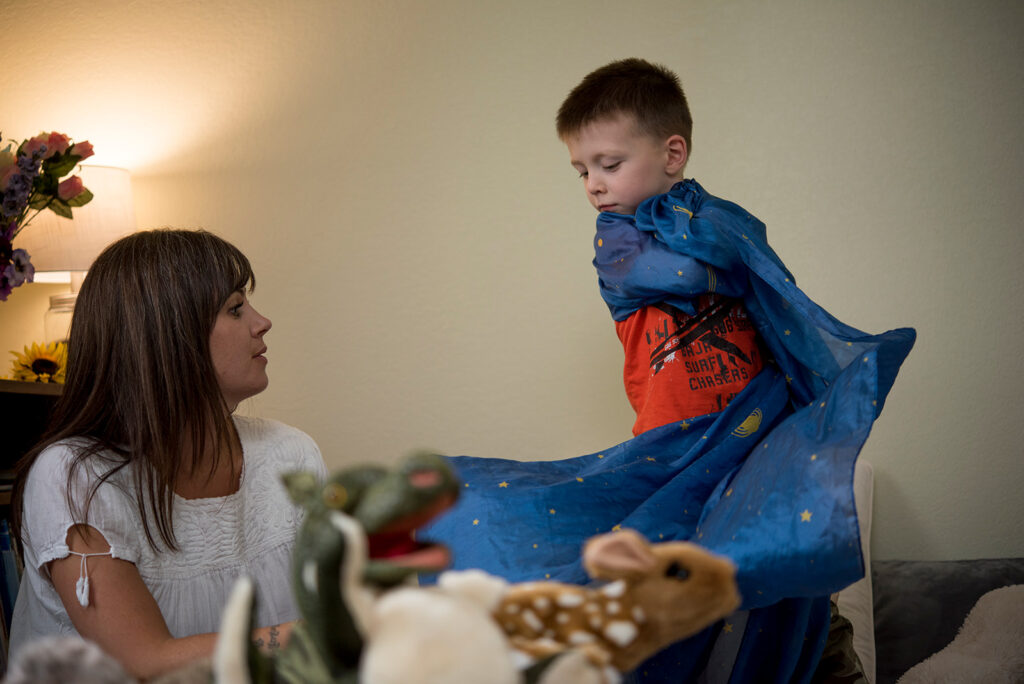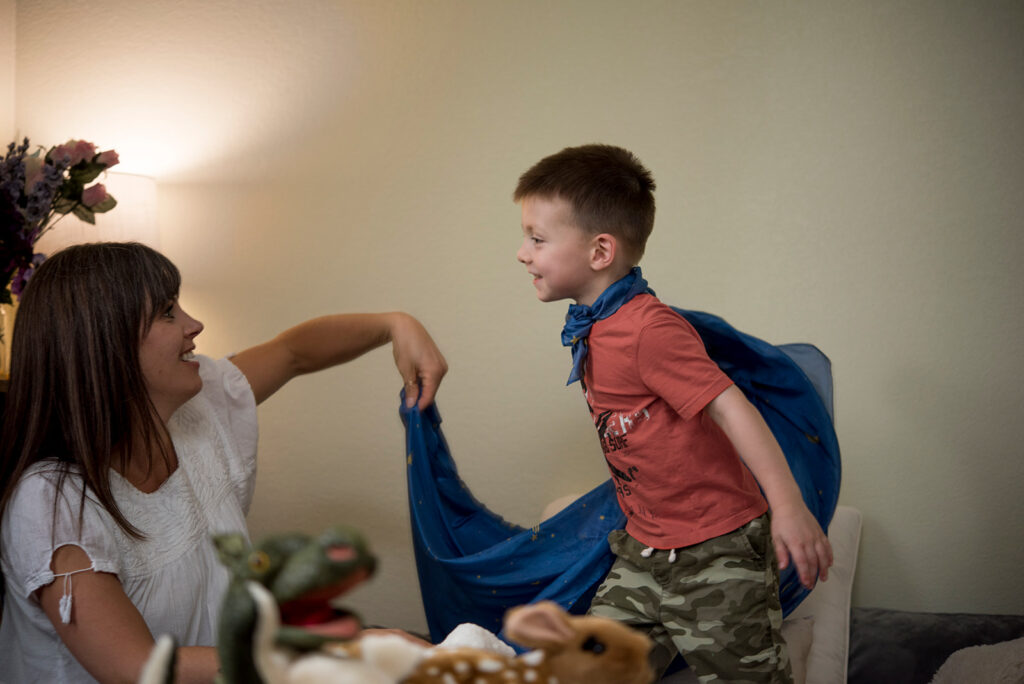What is Relational Embodied Play Therapy
I refer to my work in the playroom as Relational Embodied Play Therapy, a name I chose to capture the scope and essence of my practice. It doesn’t align with any one specific style I studied throughout my career, so it needed its own name. Relational Embodied draws on three foundational styles of play therapy: Child-Centered, Expressive, and Synergetic. I incorporate elements from each of these approaches.
Since 2016, I’ve been involved in Somatic Attachment Psychotherapy (SAP) training, which has significantly influenced my clinical work with children and their families. SAP integrates neuroscience, interpersonal neurobiology, body-based and somatic therapy, attachment and relational repair, as well as the treatment of shame and chronic shame. It also provides a deep understanding of right-brain processing. As a facilitator in SAP trainings, I adapted these concepts—originally designed for working with adults—into my therapy with children and play-based work.
The theories and skills I’ve learned from these models have merged with the insights I’ve gained from thousands of sessions with hundreds of children, consultations with fellow play therapists, and my own personal healing journey.



Relational Embodied Play Therapy is a right-brained, relational, bottom-up, somatic approach to working with children. Let’s break that down.
⋆˙⟡ Right Brained ⋆˙⟡
The language of the left brain is verbal, and the language of the right brain is non-verbal. The right communicates in gestures, body sensations, emotions, images, and metaphors. It is key in working with unconscious emotional and traumatic material and implicit memories. Sinking into the deep of the right hemisphere allows us to locate and make meaning of what is beyond words. We do use words in session, obviously, but we often work with images, metaphors, emotions, sensations, and gestures. It is paramount to hold the right-brain-to-right-brain relation connection between the therapist and the child.
⋆˙⟡ Relational ⋆˙⟡
As we experience life and love, humans acquire relational wounds. These can stem from interactions with our caregivers or from difficult relationships later in life. Love does not always translate into loving behavior. The therapeutic relationship is an opportunity to work with and repair relational wounds as well as attachment patterns.
⋆˙⟡ Bottom Up ⋆˙⟡
The bottom part of our brain is the first to develop—in utero and during the very first part of life. It is also the part of our brain that holds our stress response system. If this part of the brain is activated because it perceives a threat, there is no sense of safety inside the body. Without a felt sense of safety, no imaginative processing or integration can take place. The first priority is always to soothe, settle, and find more regulation.
⋆˙⟡ Somatic ⋆˙⟡
Somatic means “relating to the body.” This is right-brained therapy. It’s about noticing body sensations, using reflections and activities to encourage embodiment, and working within the language of symbols and metaphors as they arise in the play narratives. It’s about down- and up-regulating the child’s nervous system, supporting them to find a sense of safety, and working toward co-regulation and, eventually, self-regulation.
⋆˙⟡⋆˙⟡⋆˙⟡⋆˙⟡
While the explanation of the foundational tenets of my therapy style, thus far, is accurate, it also seems stoic. The description is theoretical and heady. (It is too left for my liking ◡̈). It does not capture the rich moments in the playroom when a child connects to their true Self, when the light in their face changes, and they create an image in the sand tray full of deeply meaningful symbols. Those moments feel like sparkly magic. My therapy work is deeply influenced by neuroscience, somatic therapy principles, and embodiment but it is also deeply affected by the feeling of magic in the playroom. I am inspired by my love of the language of metaphors, a curiosity about what causes suffering and how to support the alleviation of emotional pain, and the knowledge that my purpose is to be with people, and support them, as they come home to themselves.

In summary, Relational Embodied Play Therapy is non-directive, client-centered, accepting, and permissive. It is based in neuroscience and somatic principles, focused on relational healing and attachment repair. The approach is right-brained and incorporates nature, while also being inclusive of the therapist’s wellness and capacity. It uses the language of symbols and metaphors, creates a space for children to complete missed developmental stages and is specific about the elements of the play environment. Above all, it is deeply respectful of the magic that happens in the play therapy room when a child is able to connect to their true Self.
Thanks for reading,
Warmly,
Rachael ❤︎
Insights on Play Therapy, Neuroscience, and Professional Growth
Stay Connected
Join our newsletter to receive reflections, resources, and updates on the transformative power of play therapy and somatic approaches. Be the first to know about upcoming trainings, workshops, and consultations designed for therapists like you.
Sign up to join our newsletter.
Thank you!
You have successfully joined our subscriber list.
Relational Embodied offers therapist consultation and teaching about neuroscience-informed, non-directive play therapy, somatic approaches, and right-brained, relational therapy.
rachael@relationalembodied.com
back to the top
© Relational Embodied | All rights reserved | Privacy Policy | Terms | Website Design by Avenlee Collective
©Relational Embodied | All rights reserved
Privacy Policy | Terms
Website Design by Avenlee Collective